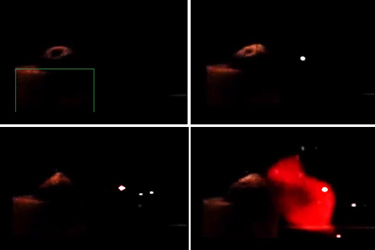Project Description
The development of environmentally friendly propellant combinations that are hypergolic and have performance levels near traditional storable propellants to be used in space applications. Advanced, green hypergolic propellant combinations have many applications including main propulsion units for satellites, igniters for multiple pulse propulsion systems, and emergency escape systems for manned space capsules, to name a few. Since not all missions are best served by one propellant combination, the capability to select propellants based on the mission is desirable. This requires an in-depth understanding of the propellant ignition and combustion processes for a range of materials.
To further the development of green hypergolic propellants, a study of the combustion processes on an empirical and a theoretical basis is underway. Two primary focus areas of performance are:
- The selection of propellant combinations for further study.
- The design of a droplet combustion test facility.
The selection of propellant combinations is a two-pronged approach. The first combinations considered involve hydride-doped paraffin fuels. Hydride particles demonstrate hypergolic ignition under exposure to nitric acid, even in low concentrations. The paraffin fuels provide protection from oxidation by water and oxygen in the atmosphere. The primary objective of this research component is to produce reliable and repeatable ignition. Bipropellant thrusters for attitude control of in-space systems traditionally use nitrogen-based fuels such as hydrazine and mono-methyl hydrazine. The long-term storage, precise control of impulse bit, and soot-free product species make these propellants attractive choices.
Team Members
List of Publications
- Thomas, A. E., Evans, B., Stober, K. J., Otaibi, R. A., Alotaibi, M., Almuqati, N., ... & Cantwell, B. (2016). Ignition Delay Testing of Various Hypergolic Ionic liquids and Oxidizers. In 52nd AIAA/SAE/ASEE Joint Propulsion Conference (p. 4782).
